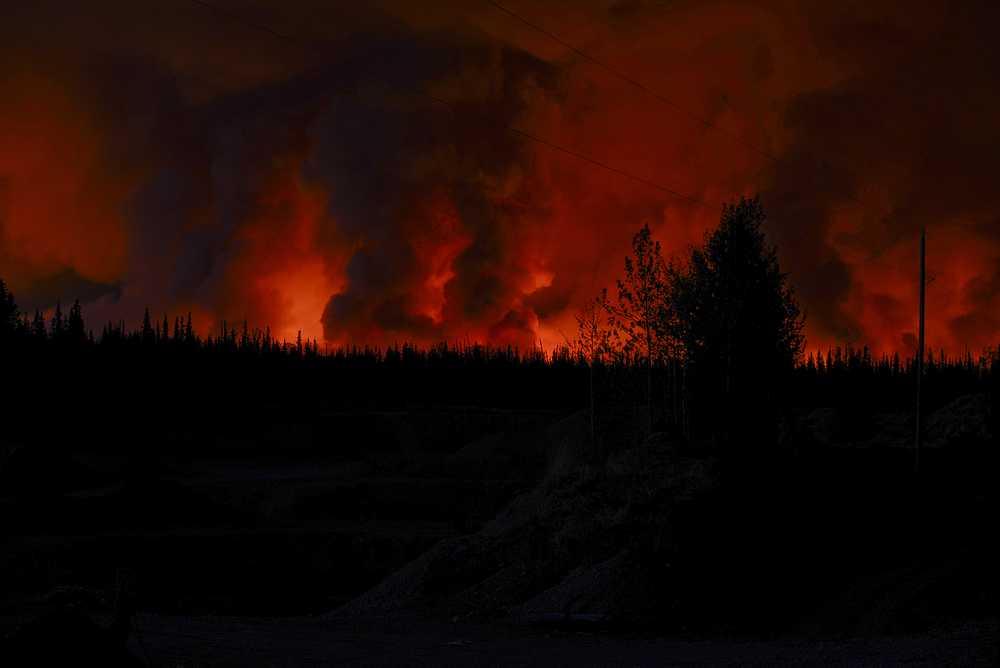Editor’s Note: A previous version of this article contained a misspelling of Public Information Officer Tim Mowry’s name. He represents the state’s Division of Forestry. Information on the requirements of burn permits was also corrected.
At the end of a warmer-than-average winter with less-than-average snowfall, Alaska Fire Services is preparing for a spring wildfire season that may begin sooner than usual. Meteorologist Sharon Alden of the Fire Service’s predictive office said that although the unusual winter is unlikely to affect the level of fire danger in the coming summer, it is cause for early preparation this spring.
Alden said there is not a correlation between a warm winter and a busy fire season, nor a correlation between a less-snowy winter and a busy fire season.
“However, there is a correlation between snowpack and the early fire season—how fast things melt out, how soon fire season starts,” Alden said.
Alden said that the intensity of fire season is more tied to precipitation than temperature, leading Fire Services to begin early preparation during the critical months of spring.
“In early spring, before green-up, the forest fuels are dryer,” Alden said. “When you have green-up, when you have trees fleshing out and new green grass is growing, you have more moisture around and it becomes a little less receptive to getting a fire started.”
The National Weather Service’s climate prediction center forecasts both an above-average precipitation level and above-average temperatures for March. Alden said that the likelihood of more precipitation might not mitigate the lack of snow on the ground in early spring.
“Springs are generally dry in Alaska, so tilting a little above normal doesn’t necessarily mean a lot of rain,” Alden said.
In addition to leaving less moisture on the ground, a lack of snow contributes to an early fire season through its effect on grass, since grass crushed down by snow burns less easily than standing grass. Kristi Bulock, fire management officer for the US Fish and Wildlife Service region that includes the Kenai Wildlife Refuge, said that the locally-abundant calamogrostis grass is a particularly good wildfire fuel.
“One of the concerns we have this year is that without the snowpack, the grass is still three feet tall,” Bulock said. “It’s up and it’s fluffy, and it’s available for burning, where generally, under a good snowpack, it would be matted down. And then as we start getting green-up we would start getting green shoots in between, and that would lessen the potential for that fuel to carry fire. But if you look out your window now you see these giant patches of cured grass… if we have any kind of ignition source — a cigarette, somebody dragging a chain on the road — the potential could be there for it to really move through that grass.”
Although Kenai Wildlife Refuge uses the Alaska Fire Services rather than managing fire protection resources of its own, it does have a staff, lead by Bulock, dedicated to planning and monitoring for fire. Bulock said that her fire reduction efforts this year will concentrate on fuel reduction. She said that in the fall the refuge may begin thinning stands of dry black spruce trees near inhabited areas such as Sterling.
Public Information Officer Tim Mowry, with the Alaska Division of Forestry, said the division is responding to an earlier season by activating its staff sooner.
“We’re bringing a couple crews on a week or two earlier than normal,” Mowry said. “Our first two crews are going to come on May 4, and we’ve got another crew scheduled to come on May 18.”
Mowry said that one method of preventative control used by Division of Forestry is its issuance of burn permits. Starting April 1st, burn permits from Fire Services will be required to burn debris piles up to 10 feet in diameter and up to 4 feet high.
“We have the ability to suspend burning on those permits,” Mowry said. “If conditions warrant it, we can issue a burn suspension or burn closure.”
Alden said that although this year’s fire season is starting early, it is too early to tell whether it will necessarily be busier than previous years.
“Fire seasons in general are more controlled by the weather that occurs during the summer,” Alden said.
Because precipitation is a dominant factor in the likelihood of fires, Alden said that this year’s warm winter won’t necessarily impact the probability of fire during the upcoming summer.
“It’s very difficult to forecast the precipitation out a month, much less several months,” Alden said.
Mowry said that the probability of fire changes drastically in response to shorter-term weather.
“Last year with the Funny River fire and the Tyonek fire, it looked like it was going to be a real busy year, then it started raining and didn’t stop until September,” Mowry said. “A lot of it is dictated by mother nature. It could be real wet, and if we have a week of dry hot weather, the fire potential’s high. You could have a whole bunch of snow, and if it melts off and you get drier weather, the snow doesn’t really mean much.”
Reach Ben Boettger at ben.boettger@peninsulaclarion.com


